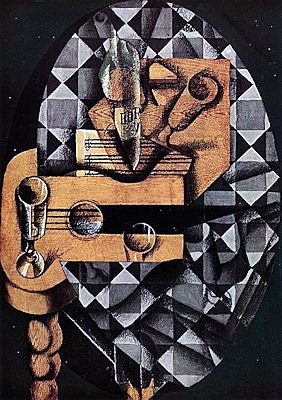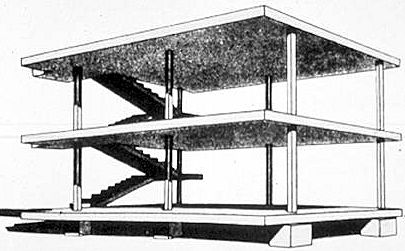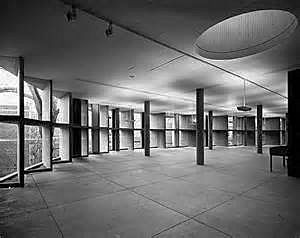hejduk |
|
| Out of Time and into Space John Hejduk |
|
|
In Gris' Guitar, Bottle and Glasses, the use of grid is most pronounced. Two major systems of gridding are incorporated; one at right angles upon the picture plane, the other at 45 degrees. The meshing of the two grids produces innumerable combinations of figure readings. There also is implied a third gridding of 60-30 degrees.
|
|
| The shape of the structural columns is round. indicating a centrifugal force and multi-directional whirl. In section the columns are at times caught by the floor slabs, at other times they by-pass the slabs and rise un-interrupted through two stories. A piston-plunger; compression-expansion of column lines is effected. Not only are the column lengths modulated, so are their diameters; if the observer takes the same 360 degree course about the columns, he will enter the realm of dynamic and static kaleidoscopic relationships. A 90 degree view parallel to the columns proposes an ordered, static system of space except for the before mentioned peripheric interaction. The observer can now begin the trek of the arc with the next stop at a 60 degree point then a 45 degree, and finally back to 90 degrees. The spatial views between these fixed geometric points and lines are filled with a conglomerate of fluctuating columnar tensions. First, when one looks into the kaleidoscope, he sees an ordered system. The box is then shaken, the elements move into dynamic relationships and upon deceleration are fixed into a new order. After each shake new spatial configurations take place, the added gifts are the outside walls, bellow-like, compressing and expanding the linear formulation. Still, through this labyrinth one is always conscious of the centralizing aspect of the scheme. |
|
*A New Realism--April, 1943. |
It is hard to believe that anyone could have conceived all these levels of spatial consciousness. It is even harder to believe that they were not so conceived. The above has attempted to explain the technical feats in space accompl ished by one of the masters of geometric figures. In a way. Le Corbusier has not been able to
detach himself from the Cubist tradition; more cannot be expected from one man's
vision. Our heritage is shown and our future can only be anticipated. The technical competence and accurate finish needed to strengthen the theoretical arguments are impeccable. The ease in which one floats through the building is like being on a magic carpet. It makes all things possible. Le Corbusiers solution to clear. defined central circulation is classical.
|
|
www.quondam.com/57/5775p.htm | Quondam © 2020.11.17 |


